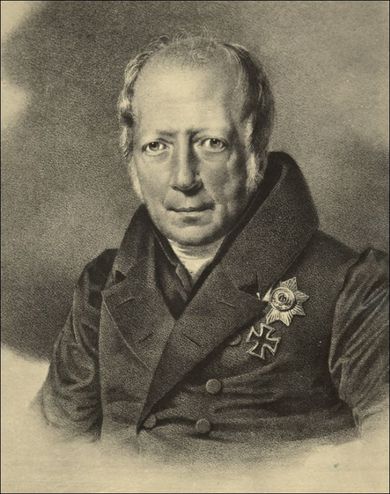Wilhelm von Humboldt
Wilhelm von Humboldt
Man is only man through language.
Wilhelm von Humboldt, Über das vergleichende Sprachstudium in Beziehung auf die verschiedenen Epochen der Sprachentwicklung (Upon Writing and its Relation to Speech), 1820
Along with his globe-trotting younger brother Alexander, Wilhelm von Humboldt – born in Potsdam in 1767 – is regarded as the quintessential Prussian polymath of his age. He left lasting legacies as a reformer of the education system, diplomat and statesmen. The Berlin university that he co-founded in 1809 has borne his name since 1949. In the spirit of the Prussian reforms in the early 19th century, Humboldt pushed for a departure from the authoritarian military state of the Hohenzollern dynasty, which in 1806 had suffered a bitter defeat against Napoleon. In its stead he advocated a liberal state as well as a system of universal humanistic education.
In old age Humboldt settled at his parents’ estate Schloss Tegel near Berlin, which he had remodelled by the architect Karl Friedrich Schinkel based on his own designs. Until his death in 1835, he primarily concerned himself with extensive language studies. His linguistic library was regarded as the largest of its kind. Among other languages, Humboldt mastered English, Italian, Spanish, French, Hungarian, Czech and Lithuanian. He also studied other languages from a wide range of regions and cultural milieus, including Polynesia. According to Humboldt, the different languages of the world give rise to different ways of looking at the world as only language illuminates the reality that surrounds one. Important works on this subject include Über das vergleichende Sprachstudium in Beziehung auf die verschiedenen Epochen der Sprachentwicklung (On the Comparative Study of Language and its Relation to the Different Periods of Language Development, 1820) and Über die Buchstabenschrift und ihren Zusammenhang mit dem Sprachbau (Upon Writing and its Relation to Speech, 1824).

